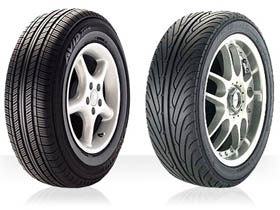Tyre Basics
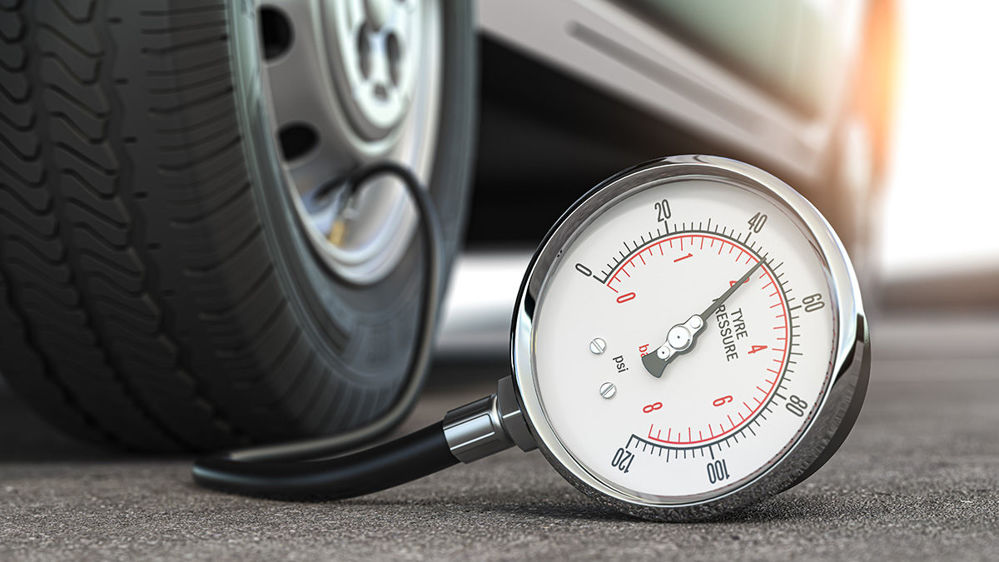
Air Pressure
Air pressure for tire should be set in accordance with the vehicle manufacturer’s specification if it’s the same as the size originally equipped on your vehicle. Correct pressure rating for your vehicle can be found on your vehicle in the following places:
- Your manual
- Printed on the inside ledge of the driver's door
- Glove compartment
The importance of maintaining the proper air pressure cannot be overstated. Under-inflation can lead to excessive heat build-up and structural stress and can cause a tire to fail. Over-inflation can cause uneven tire wear in the center portion of the tread pattern and can also lead to vehicle handling problems.
Do not check tire pressure after the vehicle has been operated because tires heat up, causing the air pressure to rise. Allow them to cool and then perform your check.
Tube Type & Tubeless Tyres
As the name suggests tube-type tyres consist of a tube which is placed between the tyre and the wheel rim. The tube inside the tyre is filled with air and inflated to allow tyres to support a vehicle’s weight and maintain the shape of a tyre.
Tube-type tyres were used for many years by all types of vehicles with pneumatic tyres before the tubeless tyre was created. However, various drawbacks of a tube inside a tyre caused the tubeless tyre to become preferred over the tube-type tyre.
The tubeless tyre scores over the tube-type tyre because it weighs less and hence less unsprung weight. Handling characteristics are also better with tubeless tyres. When the tube-type tyre looses its inflation, it has a tendency to come off the rim causing instability.
The tubeless tyre also has the advantage of repairing punctures without removing the tyre from the rim and this means individuals can repair tyres by themselves if they carry a puncture repair kit in the car.
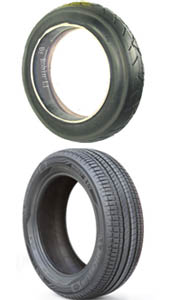
Tire Rotation
Ideally, tires should be rotated every 5,000 to 8,000 kilometers. When this is done consistently, the tires are more likely to maintain good handling and traction and deliver maximum tread life. However, it’s important to remember that tire rotation alone cannot guard against rapid or uneven wear if your vehicle has faulty mechanical parts or improper tire inflation pressure.
Forward Cross: The most commonly used rotation pattern, designed primarily for front wheel drive vehicles – which most cars have.
Rearward Cross: For rear wheel and 4-wheel drive vehicles.
Side-To-Side: Primarily used for vehicles equipped with non-directional tires of different sizes.
X-Cross: Also for rear wheel and 4-wheel drive vehicles – but can also be used as an alternative to the Forward Cross method for front wheel drive vehicles.
Front-to-Rear & Rear-to-Front: Primarily used for performance vehicles equipped with directional tires of the same size.
What about the spare tire?
If your spare tire is of the same size as the four tires in service, you should include that spare in your rotation pattern. Follow the manufacturer’s recommended rotation sequence, or introduce the spare into the rotation pattern in the right rear position.
Temporary-use spares cannot be included in your tire rotation.
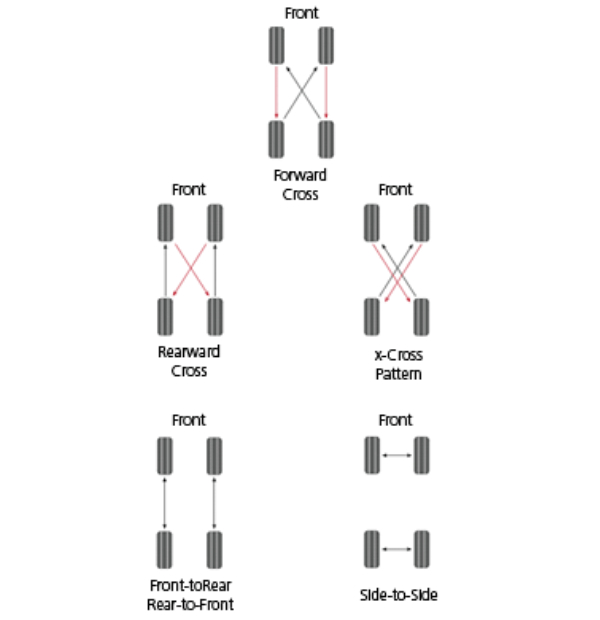
Asymmetric & Symmetric Tyres
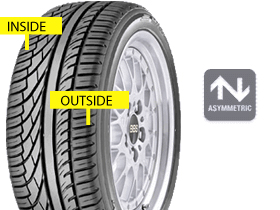
Asymmetric Tyres
Are design in such away that it can give superior dry & wet grip on roads. They are normally unidirectional.
Symmetric Tyres
These tyres look similar on inner side and on outer side of tyre, hence can be fitted either way on the wheel rims.
